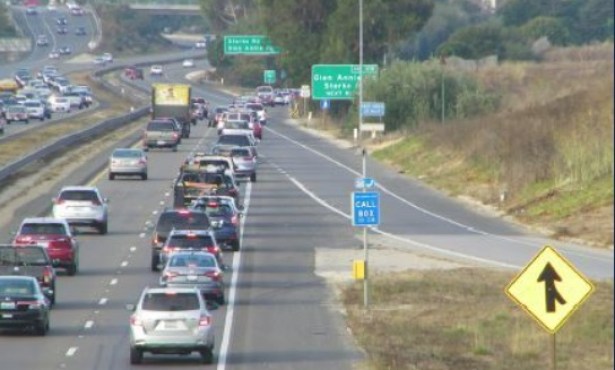Santa Barbara Could Be Getting More Rental Units
Hundreds of Apartments Could Replace Sears, Plus More Downtown

Ever since Sears locked the doors at its La Cumbre Plaza store early this year, Santa Barbarans have been waiting for the next shoe to drop. It fell this Tuesday evening, when the two Santa Barbara families who have owned the 9.1-acre Sears property for 80 years invited the City Council to begin a complicated land-use dance that could yield the South Coast as many as 550 new units of rental housing. As usual, there’s a catch; in this case, it’s time.
The city’s experimental law allowing developers that much rental housing will expire long before the city could complete its new plan for the entire mall, which would ordinarily be required. The other wrinkle is that Macerich, the company that controls La Cumbre Plaza — except for Sears and Macy’s — has made clear it will not participate in the crafting of any new specific plan. And Macerich has a lock on the property for the next 78 years. No one from Macy’s, which has nine more years on its lease, showed up to the council.
The mayor and every councilmember agreed the mall would be ideal for new high-density housing. But should City Hall negotiate a private “piecemeal” agreement with the Sears property owners, Riviera Dairy, a company made up of the Panizon and Riparetti families who once operated a dairy on the site, instead of reaching an agreement with the entire mall? (If city planners could consider the entire La Cumbre property, for example, 1,950 new rental units could be built.) Would Riviera Dairy walk away if the council failed to take advantage of what company attorney Mark Carney described as a “once in a 100-year opportunity.”
Finally the council voted 6-1 for a hybrid approach — a short-term deal coupled with long-term planning — at the same time. Staff was instructed to talk with all the property owners involved. Depending on the outcome, this proposal could have the makings of the biggest urban redevelopment project to hit Santa Barbara in the past 40 years. Councilmembers stressed the need for intense public participation in any agreed-upon process to decide the fate of the 31 acres of La Cumbre Plaza.
“To afford an average two-bedroom apartment, a family needs to earn $104,000 a year, or be paid roughly $50 an hour.”
Although less grand in scope, the council also discussed putting as many as 58 rental units on the commuter parking lot located by Carrillo and Castillo streets. The next step is to talk with the Housing Authority of Santa Barbara to see how much housing the site could accommodate — and which income groups should be targeted — without impinging too much upon the neighbors. But it was clear many councilmembers worried about losing more commuter parking spots at the same time that the Cota Street lot — now home to the Farmers’ Market — has been tagged for a new police station. That’s a total loss of 415 parking spaces.
The Housing Authority’s Rob Fredericks bombarded the council with grim statistics describing Santa Barbara’s rental housing market. Only 20 percent of city residents can afford the $1.1 million median home price; to afford an average two-bedroom apartment, a family needs to make $104,000 a year or $50 an hour. The city’s median income is only $79,000. For many neighbors, forced to park on the street, the key concern was limited parking spaces. Frederick pledged to set aside an indefinite number of spaces in the commuter lot for neighborhood residents and their visitors, as well as continuing to allow the 12 RV dwellers now parking there as part of a transitional housing program run by New Beginnings.
Were City Hall to subsidize the housing project by offering the land at below-market costs, councilmembers wanted the housing to target the so-called “missing middle,” renters making too much to be eligible for government housing assistance but not enough to make current rents. Neither the Sears nor the Housing Authority votes were binding.



